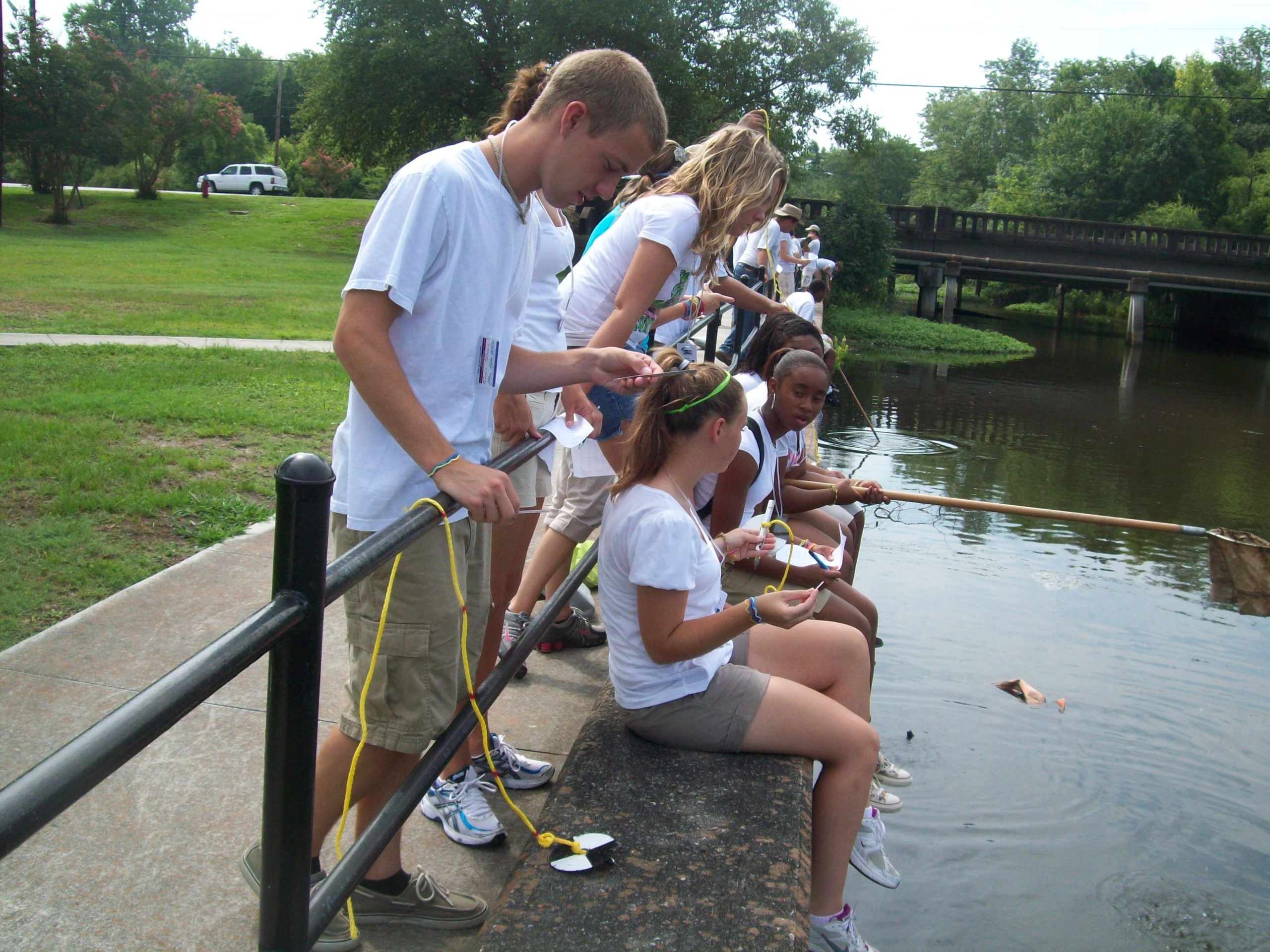2025 All-America City Finalist – Jacksonville, NC
Situated along the banks of the New River, Jacksonville, North Carolina, is a dynamic coastal city shaped by its deep military roots, rich environmental legacy, and resilient community spirit. Home to Marine Corps Base Camp Lejeune and New River Air Station, Jacksonville has grown alongside its military neighbors, forging strong civic ties and a shared commitment to service. The city’s history is deeply intertwined with its waterway, most notably the New River, which has witnessed the city’s most significant challenges and triumphs.
Faced with environmental degradation from past practices, Jacksonville turned crisis into opportunity, launching a decades-long effort to restore the New River and embed sustainability into its civic DNA. Guided by public will and cross-sector collaboration, the city has become a model for environmental stewardship, inclusive engagement, and regional cooperation. Today, Jacksonville continues to build on this legacy with bold, community-driven initiatives that reflect a commitment to equity, resilience, and innovation. The following projects illustrate how Jacksonville is putting these values into action, creating a healthier, more connected future for all who call it home.
Prioritizing Environmental Stewardship
In Jacksonville, North Carolina, decades of untreated wastewater devastated the New River, eradicating marine life and sparking urgent community action. As the only county where the river begins and ends, residents recognized their responsibility to restore what had been lost. In 1995, the city council issued a moral call to action and engaged the public through community summits. From those discussions emerged the Wilson Bay Initiative—an innovative plan to use oysters, nature’s water filters, to help revive the river.
 Volunteers of all ages joined efforts to “chub” oysters and place them in Wilson Bay, kickstarting a grassroots movement. The city shut down its aging wastewater plant and landfill, transforming them into public green space and the Sturgeon City Environmental Education Center. A $50 million land-application wastewater treatment facility was built on 6,300 acres, where treated water irrigates pine forests, replenishes groundwater, and generates $300,000 annually through timber sales.
Volunteers of all ages joined efforts to “chub” oysters and place them in Wilson Bay, kickstarting a grassroots movement. The city shut down its aging wastewater plant and landfill, transforming them into public green space and the Sturgeon City Environmental Education Center. A $50 million land-application wastewater treatment facility was built on 6,300 acres, where treated water irrigates pine forests, replenishes groundwater, and generates $300,000 annually through timber sales.
The impact has been remarkable: fecal coliform levels dropped over 600%, marine life returned, and wetlands were restored. Building on this success, Jacksonville launched the Oyster Highway in 2017, placing over 10 million oysters across 12 living reefs along the New River to further filter water, restore habitat, and boost recreational fishing. Once declared beyond saving, the New River now stands as a national model of environmental recovery and civic leadership.
Caring Community Programs & Initiatives
Jacksonville’s leaders recognized the need to unite a diverse community through environmental stewardship, youth engagement, and civic education to build a stronger, more compassionate society. They achieved this through three primary efforts:
 Sturgeon City, founded in 2000, fosters environmental education and stewardship. In 2019, a $4 million investment opened the Sturgeon City Environmental Education Center, offering year-round STEAM programs for youth and adults. With 136,000 participants to date, the center promotes “Green Time Not Screen Time” and plans new exhibits, a pollination garden, and a living lab to highlight ecosystem health and the Wilson Bay Initiative’s impact.
Sturgeon City, founded in 2000, fosters environmental education and stewardship. In 2019, a $4 million investment opened the Sturgeon City Environmental Education Center, offering year-round STEAM programs for youth and adults. With 136,000 participants to date, the center promotes “Green Time Not Screen Time” and plans new exhibits, a pollination garden, and a living lab to highlight ecosystem health and the Wilson Bay Initiative’s impact.
The New River Roundtable began as a data-sharing effort and has evolved into a collaborative forum addressing the river system’s health. It unites researchers, agencies, nonprofits, and educators to restore shorelines, prevent pollution, and deploy trash-trapping devices. Its goals include data exchange, stakeholder coordination, and public education.
The New River Institutes at Sturgeon City offer free, two-week summer programs for high school students, engaging them in science, leadership, and environmental stewardship. Over 10,000 teens have participated since 1999, many of whom later pursue related careers. Through the Jacksonville Youth Council, students engage in civic service, volunteerism, and leadership, contributing to community projects and supporting vulnerable residents.
Building Resiliency for the Future
Jacksonville faced longstanding environmental challenges—stormwater runoff, flooding, and water pollution—that demanded sustainable, community-driven solutions. In response, the city launched Clean & Green Jacksonville in 2011 to unite city leaders, residents, and regional partners around environmental stewardship. Building on stormwater practices first adopted in 1999, the initiative now encompasses watershed restoration, staff training, illicit discharge mitigation, and community volunteer programs like Adopt-a-Park and Stream/Street.

The city restored habitats, cleared 32 abandoned vessels from the New River, and created the Jacksonville Blueway for recreation. Events such as Earth Day, New River Splash, Winterfest, and National Night Out celebrate these efforts, drawing thousands annually to clean, accessible waterfronts.
Jacksonville also prioritized sustainable transportation. Federal funding in 2008 launched the trails and greenways system and Jacksonville Transit. Today, over 23 miles of greenways connect to five bus routes and 187 stops, with Jacksonville Station—a 2022 transportation hub built without local tax dollars—linking transit and recreation.
The city’s Stormwater Division trains staff in best practices, and pet waste stations reduce pollution in parks. Jacksonville has been a Tree City USA for 45 years, with 41% tree canopy coverage as of 2020. A citizen-led Environmental & Appearance Advisory Committee supports tree planting, canopy preservation, and environmental education citywide.
Together, these efforts reflect Jacksonville’s commitment to environmental sustainability, civic engagement, and quality of life through long-term, collaborative action.
Some Related Posts
Thank You to Our Key Partners



